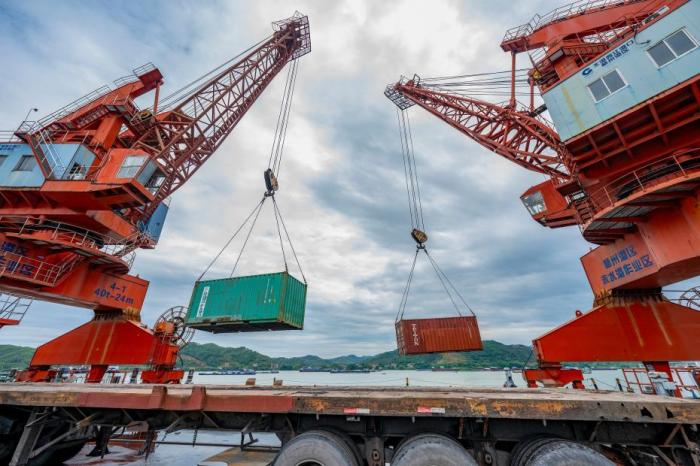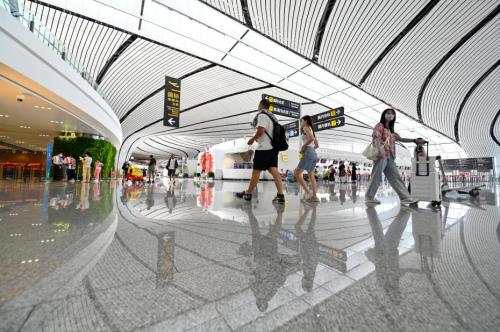
时间:2022-01-27 17:24:58人气:5973来源: China Daily
China's Tiangong space station conducted a test using its robotic arm to reposition the Tianzhou 2 cargo spaceship on Thursday morning, according to the China Manned Space Agency.
In a statement, the agency said that the arm secured the robotic cargo craft early on Thursday morning and began to move it to a new position at 6:12 am. Tianzhou 2 had been connected to the station's Tianhe core module and was undocked before the test started.
After moving the ship to a predetermined position, the arm reversed the maneuvers to bring it back to its original position. Tianzhou 2 re-docked with Tianhe, finishing the 47-minute test at 6:59 am.
According to the agency, the test achieved its goal of verifying the repositioning procedure and the devices designed for arm-enabled operations, and provided additional experience that will be used in the next steps of Tiangong's construction in orbit.
Upon its completion at the end of this year, Tiangong will consist of three main components-a core module attached to two space labs-and will have a combined weight of nearly 70 metric tons. The station is scheduled to operate for 15 years in a low-Earth orbit about 400 kilometers above the planet.
Six launches will be made this year to deploy the Shenzhou XIV and XV mission crews to the Tiangong station, to transport Tianzhou 4 and 5 robotic cargo spaceships to the station for refueling and resupply operations, and to send two large space labs to dock with the station.
The first of the six to be launched will be Tianzhou 4, which will be followed by the Shenzhou XIV manned spacecraft. Then the two space labs-Wentian, or Quest for the Heavens, and Mengtian, or Dreaming of the Heavens-will be launched into space to complete the station. The fifth to be launched will be Tianzhou 5, and the final one will be Shenzhou XV.
Pang Zhihao, a spaceflight researcher in Beijing who worked at the China Academy of Space Technology for decades, said the test was mainly intended to make technical preparations for the in-orbital docking between the Tianhe module and the two space labs.
"The test has been the first time for China to use a mechanical arm to reposition a spacecraft. It would serve as a trial run of related technologies, equipment and processes that will be involved in the space labs' docking operations, which will be sophisticated and demanding," he said.
According to the researcher, who has abundant knowledge of the Chinese space station program, the robotic arm on Tianhe is 10 meters when fully extended. It has several motorized joints, which allows it to act like a human arm to the maximum possible extent.
He said the apparatus can reach many parts of the Tianhe module, and it is able to handle payloads with a combined weight of 25 tons.

Cantonese version of Games
(9284)人喜欢2025-12-09
China's foreign trade up 3.6% in first 11 months of 2025
(4430)人喜欢2025-12-09
Maritime Silk Road Media Cooperation Platform launched in Guangzhou
(3412)人喜欢2025-12-03
China Xplained | How China contributes to rise of Global South
(10124)人喜欢2025-12-02
Capturing Guangzhou's autumn–winter blossoms
(43593)人喜欢2025-11-29
'Phone Tap' tax refunds boost China shopping appeal
(3500)人喜欢2025-11-24
Cross-cultural culinary encounter: Republic of the Congo media impressed by 15th National Games cuisine
(23513)人喜欢2025-11-19
RIDING THE CREST OF A WAVE History making teen surfer Yang wins shortboard gold, cementing her position as nation's top shredder
(23609)人喜欢2025-11-18